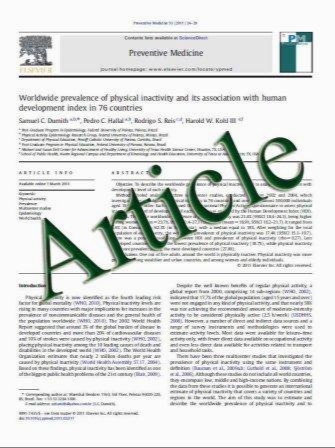Are linear measurements and computerized volumetric ratios determined from axial MRI useful for diagnosing hydrocephalus in children with tuberculous meningitis?
- نوع فایل : کتاب
- زبان : انگلیسی
- مؤلف : Helga von Bezing , Savvas Andronikou , Ronald van Toorn , Tania Douglas
- چاپ و سال / کشور: 2011
Description
Purpose This study aimed to evaluate linear measurements and computerized volumetric ratios on axial magnetic resonance imaging (MRI) scans against the diagnosis of hydrocephalus in children with tuberculous meningitis (TBM). Methods MRI scans and clinical notes of children with culture positive TBM were reviewed. Patients with surgical drainage of ventricles were considered positive for hydrocephalus. Alternatively, predefined radiological criteria of hydrocephalus in combination with any clinical criteria were considered positive for hydrocephalus. Axial T2- weighted MRI scans were used for measurement by a radiologist. Linear measurements included the Evans index, frontal–occipital horn ratio, and frontal–occipital horn width ratio. Computer-assisted segmentation of the MRI volume was performed on a slice-by-slice basis using the number of pixels comprising each region to calculate the ratios: ventricular volume: brain volume and cerebrospinal fluid (CSF)/(brain + CSF) for all slices and for a single slice at the level of the lateral ventricles. Results Twenty-two children (mean age 3.7 years) comprised ten patients with a ‘final’ diagnosis of hydrocephalus (six communicating, four non-communicating). None of the linear measurements showed a statistical correlation with the ‘final’ diagnosis of hydrocephalus. The frontal–occipital horn width ratio (FOHWR) (p=0.09) was the closest to demonstrate statistical significance. The highest sensitivity was attained with FOR (90%) followed by FOHWR (85%). The highest specificity was reached with FOHWR (70%). Volumetric ratios were inferior to linear measures. Conclusion Linear measures of hydrocephalus in TBM were more reliable than volumetric ratios. Hydrocephalus can be quantified most reliably using the FOHWR. This is useful for serial follow-up and for research of TBM.
Childs Nerv Syst DOI 10.1007/s00381-011-1536-4 Received: 6 June 2011 / Accepted: 15 July 2011


